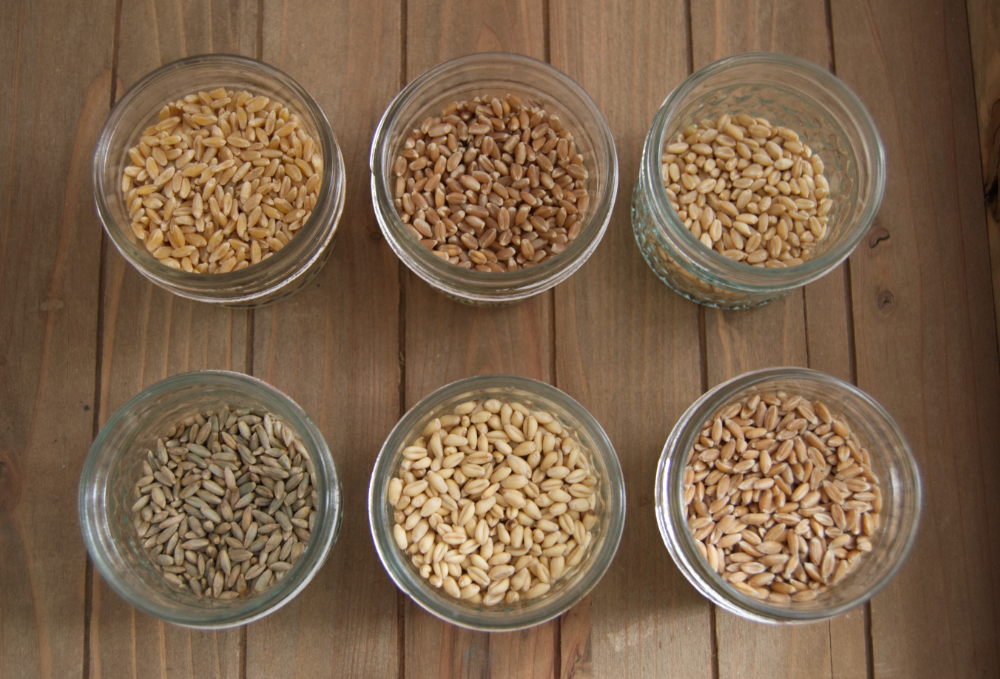
Getting Started with Fresh Milled Flour: A Guide to Different Types of Grains
Share
This post may contain affiliate links, including Amazon affiliate links. As an Amazon Associate, I earn from qualifying purchases—at no extra cost to you. Read my full disclosure here. Thank you for supporting 7 Good Ears!
When you begin milling your own flour at home, you unlock a world of flavor, nutrition, and customization in your baking. Fresh milled flour, made from whole grains, retains all the nutrients found in the bran, germ, and endosperm, making it a far superior option compared to refined flours. Each grain brings its own unique qualities—flavor, texture, and baking performance—to the table. Whether you’re making rustic breads, delicate pastries, or hearty muffins, knowing the different types of grains and their uses will help you make the best choice for your baking needs.
In this guide, we’ll explore the most common types of wheat and other grains, including barley, their nutritional profiles, and the best ways to use them in your kitchen.
Barley
Description: Mildly sweet and nutty, barley flour adds tenderness and flavor.
Protein Content: 10–12%
Common Uses: Cookies, pastries, muffins, and as a blend for softer sandwich breads.
Texture: Soft, tender crumb; does not contribute to rise.
Durum
Description: High-protein wheat used in traditional pasta-making.
Protein Content: 12–15%
Common Uses: Pasta, some flatbreads.
Texture: Dense and strong; creates chewy texture.
Einkorn
Description: Ancient wheat with rich, nutty flavor and high carotenoid content.
Protein Content: 12–14%
Common Uses: Cookies, pancakes, muffins, pastries, and rustic breads.
Texture: Delicate and moist; low gluten strength.
Hard Red Wheat
Description: Bold, nutty flavor with high gluten strength.
Protein Content: 12–15%
Common Uses: Sourdough, sandwich breads, pizza, bagels, flatbreads.
Texture: Hearty crumb and good rise.
Hard White Wheat
Description: Milder flavor with the strength of hard red wheat.
Protein Content: 12–15%
Common Uses: Sandwich breads, sourdough, pizza, flatbreads.
Texture: Lighter color and softer flavor; strong rise.
Khorasan Wheat (Kamut®)
Description: Buttery, golden ancient wheat with large grains.
Protein Content: 13–17%
Common Uses: Enriched breads, pasta, flatbreads, and cookies.
Texture: Rich and chewy; high absorption.
Millet
Description: A mild, slightly sweet gluten-free grain with a bright yellow hue.
Protein Content: 11–14%
Common Uses: Muffins, cookies, pancakes, flatbreads, and porridge-style bakes.
Texture: Crumbly and delicate if used alone; softens blends.
Oats (Whole Groats)
Description: Oats ground from whole groats make a tender, gluten-free flour rich in moisture and flavor.
Protein Content: 12–15%
Common Uses: Muffins, cookies, pancakes, quick breads, and to soften whole wheat bread.
Texture: Moist and soft; helps retain moisture but doesn't rise well on its own.
Rye
Description: Earthy, tangy grain with low gluten strength.
Protein Content: 10–12%
Common Uses: Rye breads, sourdough, crackers, dense muffins.
Texture: Dense and moist; needs wheat for structure.
Soft White Wheat
Description: Mild, slightly sweet flour ideal for tender baked goods.
Protein Content: 9–11%
Common Uses: Muffins, cookies, biscuits, pancakes, quick breads.
Texture: Soft, tender crumb.
Spelt
Description: Mild and slightly nutty ancient wheat.
Protein Content: 12–15%
Common Uses: Pancakes, muffins, cookies, enriched breads.
Texture: Soft but extensible dough; overmixing weakens structure.
Teff
Description: Tiny, nutrient-rich grain native to Ethiopia, famous for injera. Dark or ivory teff flour adds earthiness.
Protein Content: 9–12%
Common Uses: Flatbreads, pancakes, muffins, brownies; works well in blends.
Texture: Soft and moist; earthy, slightly tangy flavor.
Choosing the Right Grain for Your Baking Needs
When milling your own flour, the choice of grain will have a profound impact on the outcome of your recipe. Each type of wheat and grain has its own unique characteristics, making it essential to choose the right one for the specific texture and flavor you’re looking for. See Choosing the Right Grain for Your Baking Needs for a detailed list of the best grain for different types of baked goods.
- For Hearty Breads: Hard red winter or spring wheat and rye are ideal for dense, flavorful loaves.
- For Delicate Pastries: Soft white wheat or soft red winter wheat will give you light, tender baked goods.
- For Pasta and Mediterranean Dishes: Durum wheat is your best bet for creating semolina and pasta doughs with excellent structure.
- For Nutty, Whole Grain Flavor: Ancient grains like spelt, einkorn, and Khorasan wheat will add depth of flavor and nutritional value to your baking.
By understanding the distinct characteristics of these grains, you can elevate your baking to a whole new level of flavor and nutrition. Happy milling and baking!
